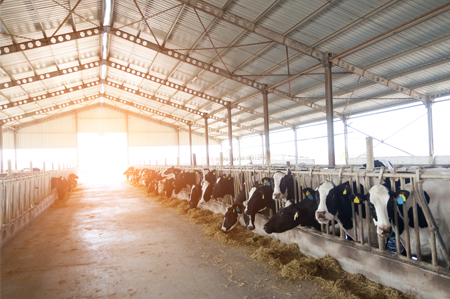Dairy Co-Ops Hope Volatile Milk Market has Finally Found a Balance
Category: Dairy
 (Agrimoney) – Dairy co-operatives are hoping for a more sedate milk market in 2017, after the wild volatility of the last few years, with balanced supply and demand keeping prices near their current levels.
(Agrimoney) – Dairy co-operatives are hoping for a more sedate milk market in 2017, after the wild volatility of the last few years, with balanced supply and demand keeping prices near their current levels.
FrieslandCampina and Arla, two of the world’s largest dairy co-operatives respectively, both see a balanced market for the year to come, with production stabilizing after a recent slowdown.
“We do not currently foresee significant changes in global consumption trends or big shifts in global trade patterns during 2017,” said the Danish co-operative Arla.
This outlook tallies with one from the UN, which sees dairy markets adequately supplied, despite rising prices.
2016 market rally
Global dairy prices rose sharply last year, with prices on the GlobalDairyTrade index up some 55% between July and December.
And the UN’s FAO dairy price index for February was seen at its highest level since August 2014, up 37% year-on-year.
But the FAO on Thursday said the market was not currently tight, given that “supplies to the international market continue to be adequate considering the level of demand”.
Tight supply seen driving price increase
“Looking back, the price rally during the second half of 2016 was driven primarily by a European decline in milk supply that led to an increasing raw material shortage,” Arla said.
The co-operative noted that the rally had come despite no big pick-up in demand.
“Unlike the earlier price cycles of 2007 to 2008 and 2012 to 2013, when global demand was the key driver for price increases, the price mechanisms of 2016 were supply-driven.”
Arla saw prices now dependent on “how supply will respond to the increasing market milk prices, and how fast this supply recovery will take place”.
Production edges up
FrieslandCampina on Thursday reported rising profits, thanks to an increase in higher margin product sales, despite a fall in revenues thanks to lower dairy prices and negative currency effects.
2016 profit increased by 5.5% to E362m, while revenue fell by 1.9%, to E11.0bn.
The Dutch co-operative forecast global milk production to rise somewhat in 2017, with a “marginal increase in milk production” expected within the European Union”.
But both co-operatives warned of the potential effect to European Union phosphate reduction measures, which are being bought into law in the Netherlands.
Major regulatory factors such as EU phosphate regulation and other environmental regulations are likely to negatively impact the development of the supply and demand balance in 2017,” said Arla.
Flat market forecast
FrieslandCampina struck a downbeat tone on demand prospects.
European dairy demand meanwhile, is likely to “remain stable or stay on a slightly declining trend,” the co-op said.
“In Africa, the Middle East and South America, a further decline in demand is foreseen.”
But in Asia, and particularly in China, “a slight increase in the demand for dairy products is expected”.
“As a consequence of the above-mentioned trends, it is expected that the prices for basic dairy products will continue to fluctuate around the year-end 2016/beginning of 2017 level,” FrieslandCampina said.




